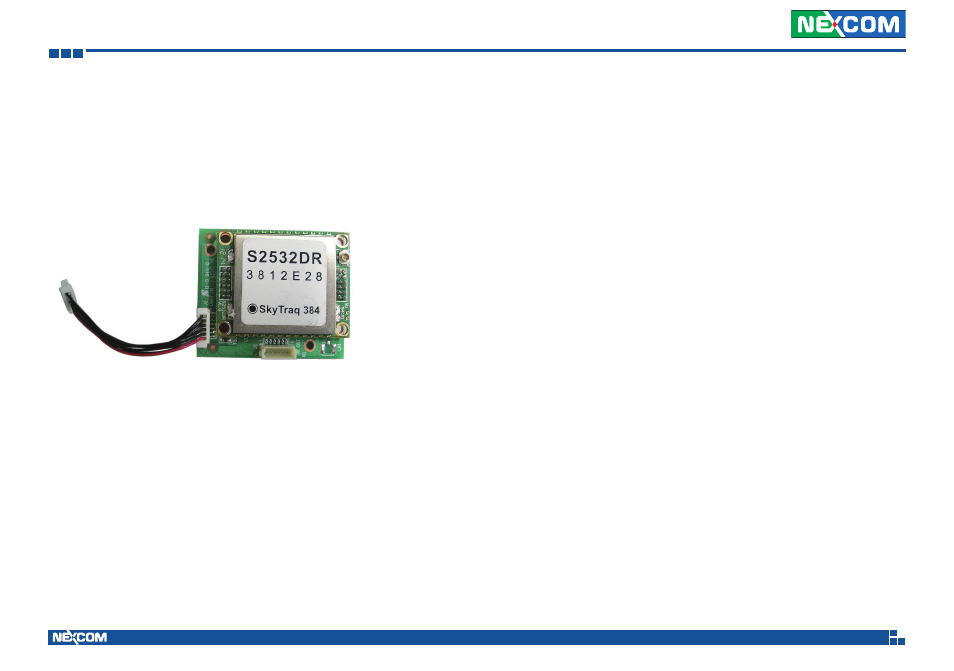G: p, Gps d, Viob- gps-dr02 – NEXCOM NViS 3620 User Manual
Page 109: Ppendix, Efinition, Eckoning, Odule, Technical specifications, S2532dr overview

Copyright © 2013 NEXCOM International Co., Ltd. All rights reserved
95
NViS3620/3720 series User Manual
Appendix G: Pin Definition for GPS with Dead Reckoning
a
PPendIx
g: P
In
d
efInItIon
for
gPs d
ead
r
eCkonIng
m
odule
-- vIoB-
gPs-dr02
Technical Specifications
Receiver Type
L1 C/A code, 65-channel Venus 6 engine
Accuracy
Position 2.5m CEP
Velocity 0.1m/sec
Time 300ns
Startup Time
1 second hot start under open sky
< 29 second warm start under open sky (average)
29 second cold start under open sky (average)
Reacquisition 1s
Sensitivity
-148dBm cold start
-161dBm tracking
Update Rate
1Hz
Operational Limits Altitude < 18,000m or velocity < 515m/s
Serial Interface 3.3V LVTTL level
Protocol
NMEA-0183 V3.01
PGGA, GPGLL, GPGSA, GPGSV, GPRMC, GPVTG*1
38400 baud, 8, N, 1
Datum
Default WGS-84
User definable
Input Voltage 3.3V DC +/-10%
Input Current ~40mA tracking
Dimension
25mm L x 32mm W
Weight
5g
Interface Connector two 12-pin male header, 1.27mm pitch
Operating Temperature -40oC ~ +85oC
Storage Temperature -55 ~ +100oC
Humidity 5% ~ 95%
S2532DR Overview
The S2532DR GPS Dead-Reckoning receiver module combines GPS
position data, gyroscope data (measuring turning angle), and odometer
data (measuring distance traveled) to formulate position solution. This
enables accurate navigation solution in poor signal environment or signal
blocked area such as inside tunnels. The S2532DR is ideal for applications
requiring accurate continuous navigation with 100% availability.
The S2532DR features 65 channel GPS receiver with fast time to first fix and
improved -148dBm cold start sensitivity. The superior cold start sensitivity allows
it to acquire, track, and get position fix autonomously in difficult weak signal
environment. The receiver’s -161dBm tracking sensitivity allows continuous
position coverage in nearly all application environments. The high performance
search engine is capable of testing 8,000,000 time-frequency hypotheses
per second, offering industry-leading signal acquisition and TTFF speed.
